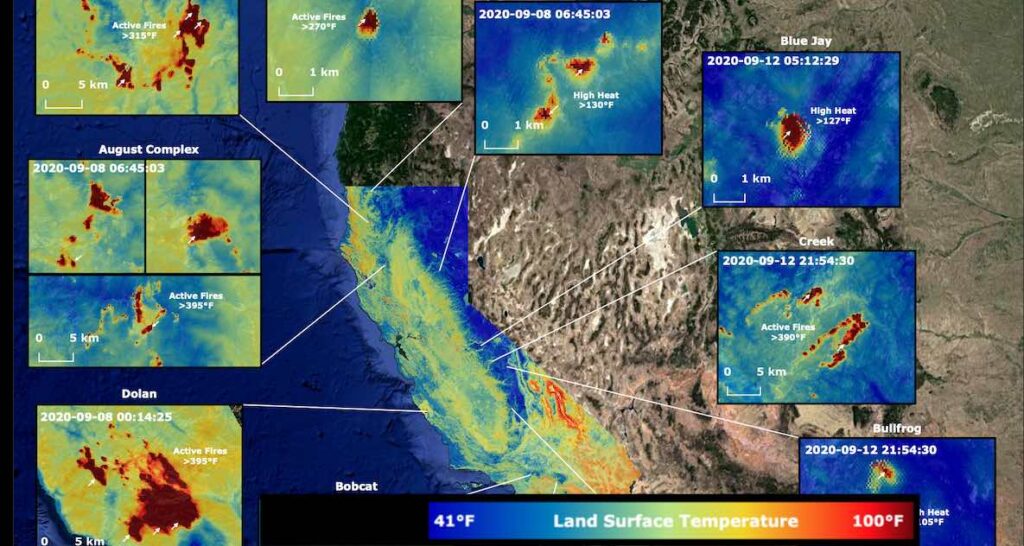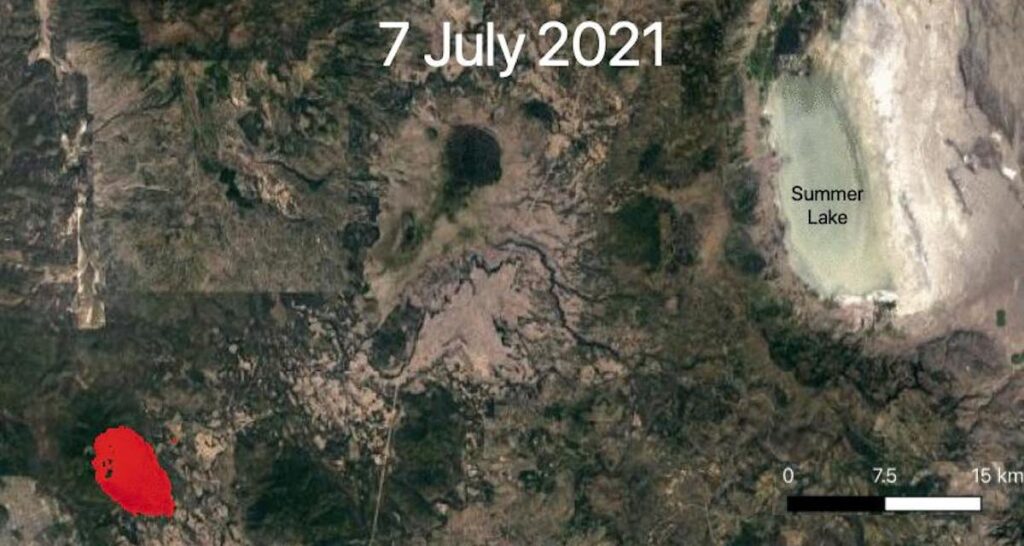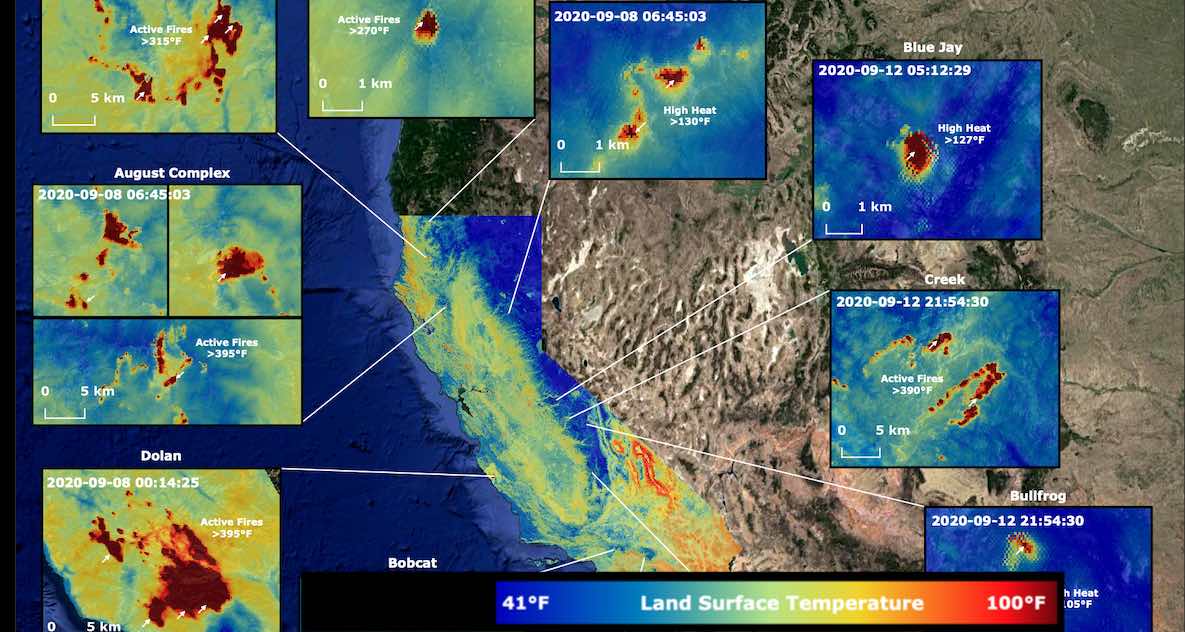A NASA instrument on the International Space Station is uniquely positioned to provide firefighters with valuable intel regarding wildfire progression and hotspots over time.

Data from the thermal maps produced by ECOSTRESS has helped frontline responders contain about 53% of the Bootleg Fire in southern Oregon, which two weeks ago was the largest wildfire burning in the U.S.
ECOSTRESS —ECOsystem Spaceborne Thermal Radiometer Experiment on Space Station— is measuring surface temperature from the vantage point of space, with the ability to observe fires at a high spatial resolution (around 70 meters), making it ideal for tracking fires.
Researchers on the RADR-Fire team at Pacific Northwest National Laboratory have been experimenting with ECOSTRESS data as part of a new tool now being implemented for first responders like the U.S. Forest Service.
In one instance, ECOSTRESS was tracking the movement of the Bootleg Fire and identifying its proximity to critical infrastructure. Areas in red represent the hottest pixels ECOSTRESS can detect. The extreme heat in the red areas indicate the fire front, or where resources are most needed.
The capabilities of ECOSTRESS are unique. Most satellites don’t have high-enough resolution to track the fine line of the fire front, but when they do achieve higher resolution than ECOSTRESS, they require 5–16 days to return to the same area again, while the space station crosses overhead twice in one day.
RELATED: Teen Invents Clever Fire Extinguisher to Save Your Home While You’re Away

ECOSTRESS also captured data over Northern California’s Dixie Fire, which had doubled in size to more than 220,000 acres in a few days.
CHECK OUT: After Massive Wildfires, DroneSeed is Replanting Trees 6x Faster By Using Special Drones
More than 7,000 personnel at the end of July were involved in the wildfire response to the two fires. Although they have a variety of tools at their disposal, the use of spaceborne high-resolution data like that provided by ECOSTRESS serves as a good example of the versatility and real-world impact satellite data can provide.
Follow all the ECOSTRESS News on the Jet Propulsion Lab website.
MORE: PG&E Says It Will Bury 10,000 Miles of Power Lines to Reduce California Fire Risk
SHARE the Wildfire Innovation With Your Western Friends on Social Media…




















